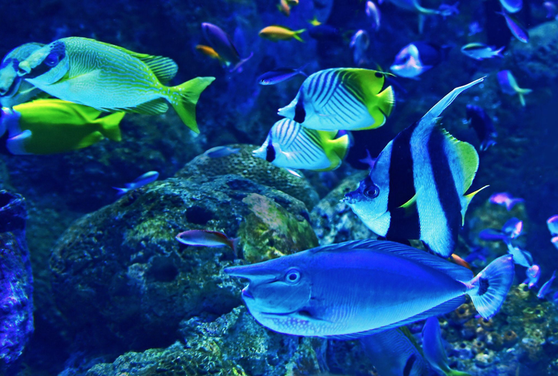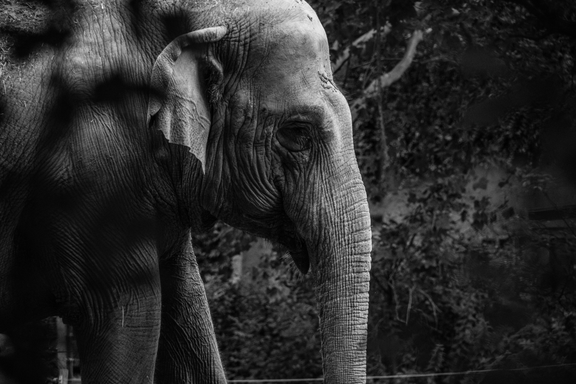|
Humans have a very delicate relationship with animals. For centuries animals have been used for several purposes, be it as pets to fulfill the need for affection or be it for commute so that they can transfer easily from one place to another.
Ethics and the need to do what is right don’t go hand in hand. It has been a long time that people have assumed that they can do whatever they want and how they want in the name of science. We can easily explain this behavior as playing God. The concept of introducing non-native animals to other allocation where the natives have already decided their habitats and have found sense of their food and other sorts of requirements is mostly because of the human intervention. This introduction can create quite the catastrophic condition when the native species haven’t even evolved to deal with these threats. That is when the native biodiversity will be in threat because of all the competitive environment, and that is where the “fittest survives” is being proved.
0 Comments
Hawaiian Bobtail Squid and the Tiny Bacteria living in it; An Elegant Display of Symbiosis12/3/2021 One of the key and prominent aspects of the biology of microbiomes as we know them is their interactions that are, in most instances, symbiotic. Nowadays, with the advancement of science and technology, there has been a trend in the context where individuals who are more science
and research centered is preferring to study these interactions with the help of multispecies models as well as microbial interaction in situ. With the help of these studies across various and multiple microbial systems, various common and looped interaction mechanisms have been identified. These interactions range from the presence of pollutants, the competition of nutrients, cross-feeding mechanism, metal access, various signaling pathways, optimum pH, and numerous as well as diverse interactions across the biofilms. With the rightful help of both science and technology, we are now able to use these studies to discover the underlying connection between various interdisciplinary scientific fields in which we have successfully combined the use of genetics, metabolomics, imaging, and microfluidic technique to have an insight regarding the processes that make up this worthy interaction and their impact on both the microbiomes and their environment. 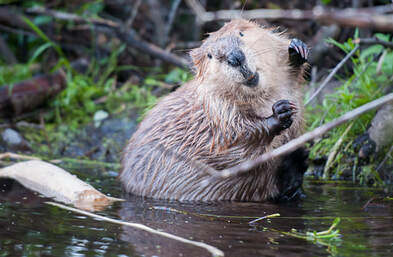 Photo by Jillian Cooper on Unsplash Photo by Jillian Cooper on Unsplash Make way for the natural engineers-Beavers World’s Cutest Protectors! So climate change is no longer something that is a taboo subject. Gone were the days when people used to talk about it behind the doors and in whispers. In recent years if there is one thing that has unified the whole globe together, it is the care for our mother nature. Be it the call of Greta or the elevated interest level that the celebs have shown, global climate change is a topic that is making headlines for all the right reasons. Some of the worst things that humankind is subjected to are the shortage of non-renewable sources as well as the fear that we won’t have much for its coming generations. Let us sum up what are the worst possible consequences of climate change: 1. Oceans are getting warm. 2. The slow but steady rise of the sea level. 3. Prolonged and intense droughts that are threatening the crops. 4. Droughts that also pose serious threats to wildlife or freshwater. 5. Biodiversity endangerment. 6. Serious ambient air pollution. 7. Chronic diseases and their high rates. 8. Heatwaves. 9. Glaciers are melting. 10. Habitat destruction. Oceans cover more than 70% of the earth’s environment. This fact makes understanding the habitual situations of the creatures that reside there all the more inevitable. We, humans, claim that we know so much about the world and the creatures that call this place home. But that is so not true. Our knowledge about our earth is insubstantial. We might have subdued the terrestrial ecosystems, but we are far from claiming that we know all of it.
Know about the Deep Sea more closely The search for the unknown is deep-rooted inside the human brain. Deep-sea is one such region that is majorly unknown to the human race. This zone has always piqued the curiosity in humans and yet there is little to no information about this region. The absence of sunlight, low temperatures, and painfully high water pressures are some of the highlights of how tough life is under the darkest shades of blue. At a depth of approximately 1000 m, when even the sunrays fail to penetrate the water column, the existence of life becomes questionable, but not for these creatures. Imagine a pressure of three subways being laid on you that is the type of pressure that we are talking about. Amazing, right?! Today we will be taking a ride to one of the darkest, resilient, and largely absent from the human eye region that is still a mystery to the human mind. 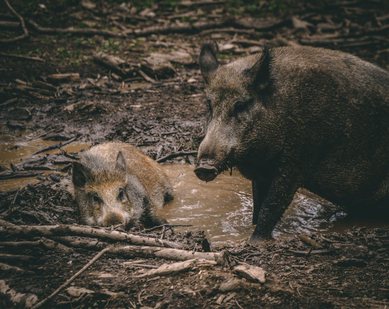 Photo by Jonathan Kemper on Unsplash Photo by Jonathan Kemper on Unsplash Boar, hog, pig, or swine; wild or feral! Whatever you call it, they all wallow in mud and destroy vegetation. Though they are all biological descendants of Sus scrofa, they can be differentiated depending on their genetics and environment. A pig is usually referred to as the barnyard variety; a boar is a non-castrated male that lives in the wild, a hog is simply a large pig or boar, and a piglet is a juvenile swine. And what about the wild and feral acronyms? All wild pigs are generally known as wild boars, however, escaped domesticated pigs are strictly called feral pigs or feral swine. They're not true boars as they belong to the subspecies Sus scrofa domesticus. Now, coming to the wild boars of the United States, they are a mixture of domestic breeds and European wild boars. When these two races mix, they produce what's called super-pigs. And the problem with these hybrids is you get all of the best benefits of each breed. Six million to nine million wild boars are wreaking havoc in at least 39 states and four Canadian provinces, half of them inflicting damages worth $400 million annually in Texas alone. They destroy recreational areas, frightening tourists in state and national parks occasionally and squeezing out other animals. No matter how many times you have heard it, we will say it anyway. Zero waste is the need of the hour and is the ultimate way to save both the human race and the environment. There is not a single day that goes without us witnessing or hearing something bad that is happening to the environment.
From wildfires to the extinction of species, the environment is going through some of the worst phases of its existence. But have you ever wondered about what productive steps you can take to do something valuable for your environment? If you haven't, there is a blog for this thought. We will be discussing this revolutionary step towards the environment and its restoration that is Zero waste living in great lengths because the devil is in the details! Zero waste… know about it a little more! Black market trade of wild animals and plants, living or dead, for their parts or products derived from them, is a multibillion-dollar business, third only to drugs and arms. The illegal wildlife trade generates a hefty sum of $5 to $20 billion per year.
The black market trade of wildlife is both unethical and unsustainable. Endangered species are the common contraband for their rarity and economic values of exotic products. But, not all wildlife trade is illegal! Many wildlife species are exclusively bred and harvested for their legitimate trade as food sources, pets, ornamental values, touristic and medicinal purposes. Things get messy when wildlife trade escalates unsustainably, negatively impacting the natural resources, biodiversity, and local businesses in the region that might benefit from the tourism and legal trade. Nonetheless, the line between legal and illegal trade has been blurred with poachers trying to pass off their illicit wildlife products as legal. Captive breeding of wildlife species for such products spikes the demand and increases poaching in the wild. But the question arises, “Why would someone covet the word’s most charismatic wildlife species?” The answer is simple! Some animals like African Gray Parrots, cuddly Asian Otters, and squirrels are desired as pets, pangolin meat and shark fins as a delicacy; and the body parts of tigers, bears, and pangolins are used in traditional Asian medicines; while elephant ivory, and tiger skins and bones are often traded as souvenirs or as a status symbol. Cryptocurrency was a relatively obscure term and was not really spoken about out loud ten years back. But now it’s a whole new ball game with the cryptocurrency of different origins and names having a worth up to 70,000 dollars a coin at its peak. What is the basic definition of this cryptocurrency? It is a virtual currency that uses complex encryption algorithms. It is highly decentralized, and it is highly secure, and has a zero chance of being counterfeited.
The most famous one is Bitcoin. It was made by a group of unknown people, and all there is to remember them by is the pseudonym: Satoshi Nakamoto. Bitcoins which are now synonymous with the word cryptocurrency, have taken the world by storm. From relatively obscure to a full-blown phenomenon, especially after the series of tweets by Tech Giants are turning heads and appear to be a brilliant investment opportunity for many people. The investment in them is one that can have a huge upside and great returns. But will they make paper currency and coins a thing of the past? And what are the effects of cryptocurrency on the environment? The 2021 theme for World Day to Combat Desertification and Drought is Restoration, land, and recovery. We build back better with healthy land. It highlights the need for land restoration and reclamation of the natural ecosystem for a greener environment and economy. 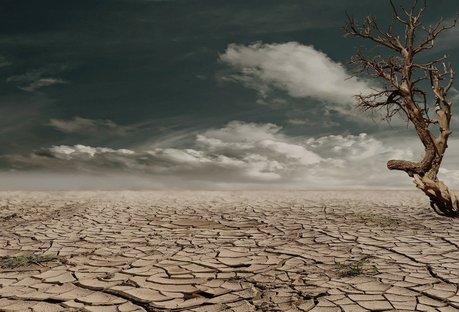 Image by Marion from Pixabay Image by Marion from Pixabay The human-induced degradation of arid, semi-arid, or sub-humid land (collectively known as dryland) and loss of vegetative cover are termed Desertification. The term might have pulled out a Sahara Desert sketch or any other desert in your mind. However, it is not limited to one. It encompasses all the changes in soil quality, vegetative cover, water resources, wildlife, and land-use changes. The United Nations Convention to Combat Desertification (UNCCD), established by the United Nations in 1994, defines drylands as “areas other than polar and sub-polar regions where the ratio of annual precipitation to potential evapotranspiration ranges between 0.05 to 0.65 or 5% to 65%”. Desertification hardly hits the drylands as these regions receive little or no annual precipitation.  Photo by Neil Su on Unsplash Photo by Neil Su on Unsplash There are millions and millions (~8.6 million) species of plants and animals. They have two kinds of names. The local names and the scientific names. Their local names might cause certain difficulties. For example, starfish is called so because it looks like a star. But is it a fish? A fish by definition is a limbless cold-blooded vertebrate animal with gills and fins living wholly in water. Similarly, an ornithologist from the 'land down under' is talking to his fellow scientists from Europe, and he wants to talk about magpies. Easy right? But which magpie is he talking about? The Australian or Eurasian? And this is how confusion is generated. Imagine the confusion when millions and millions of people with different languages talk about the same species (with different common names) and vice versa. Also, the local name provides no precise information as to which group the organism belongs to. This is where scientific names are very helpful. The use of scientific names, Greek or Latin, for plants and animals helps reduce this confusion. And also, the organisms are divided into many categories, which help them be classified. |
|
|
(833) CMS-LINE
(833) 267-5463 PO Box 13477 Mill Creek, Wa, 98082 © Conservation Made Simple. All rights reserved.
501(c)(3) Non-Profit, Tax ID#: 82-1646340 Copyright © 2021 Conservation Made Simple |

